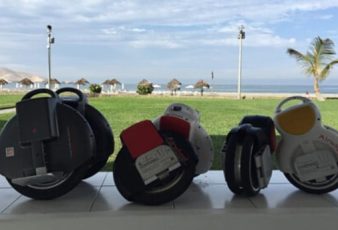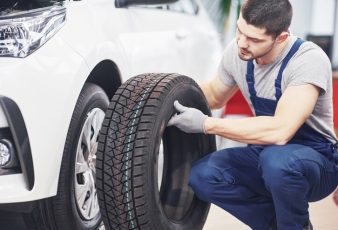If you’re planning a successful fishing trip with your boat, or you’re looking to explore some remote areas in the vast Australian wilderness and stay there for a few days with your camping trailer, taking your big toys from point A to point B and back safely requires some careful consideration.
Towing boats, camping trailers, caravans, or even horse floats are seemingly straightforward, but it does require some extra 4×4 off-road accessories and factors to keep in mind in order to do it properly. This isn’t just to keep yourself and everyone else on the road safe from your large, heavy haul, but to make sure you abide by local towing laws and regulations as well.
What are some factors you need to take into consideration when Towing?
The most important thing you need to pay attention to is your vehicle’s gross combined weight rating, which includes not only the weight of your vehicle, cargo, and passengers, but also whatever it is that you’re towing and its load. This number is determined by your 4×4’s manufacturer, and it represents the maximum safe amount of weight that it can tote all-in, and it’s important not to exceed it.
There are multiple parts of your vehicle that play a role in the towing capacity, including the drivetrain, engine, wheelbase, hitch, and gear ratio. 4×4 vehicles are obviously on the heavier side, which can reduce towing capacity. If you don’t need the 4WD capability, stick to the rear-wheel-drive for the best results. Further, longer-wheelbase SUVs and trucks are better at towing than their shorter-wheelbase counterparts, and they also offer superior control.
When it comes to power, towing efficiently is all about torque, which is why diesel-powered vehicles have higher tow ratings than gas-powered vehicles. Lastly, many SUVs and trucks come with different axle ratios. Higher ratios translate into better pulling power, but at the cost of fuel economy
What are some Accessories and Support Parts you require to Tow?
Next, you have to consider the hitches and balls. These accessories are categorized based on their towing capacity.
- Class One – Up to 910kg
- Class Two – Up to 1600kg
- Class Three – Up to 2300kg
- Class Four – Up to 4500kg
- Class Five – Up to 7700kg
Most cars and crossovers are fitted with class one, two, or three hitches, whereas larger SUVs and trucks can be fitted with class three, four, or five hitches. Every hitch features a different sized receiver tube, which is where the ball mount and ball go. Class one and two hitches feature a 1.25-inch (31.8mm) receiver tube, class three hitches feature a 2-inch (`50.8mm) receiver tube, and class four and five hitches feature either a 2-inch (50.8mm) or 2.5-inch (63.5mm) receiver tube, depending on the configuration. It’s important to ensure your trailer sits level by getting ball mounts that raise or lower the ball as necessary.

The ideal ball size is going to be determined by the weight of your trailer. The most common ball sizes are 2.3 inches (58.7mm), 2 inches (50.8mm), and 1.9 inches (47.6mm). It’s recommended that you use a ball with a weight capacity that surpasses that of your loaded trailer.
If you’re towing more than 5500kg, you’ll probably need a heavy-duty truck with a fifth-wheel hitch and a gooseneck. These accessories are placed in the bed of the truck, in front of or just over the rear axle. They allow you to haul loads of up to 13500kg.
First-Time Towers should pay attention to what Experts are saying
If it’s your first time towing, there are a few steps you should take to make sure you get it right, and it all starts by ensuring you connect the trailer to your vehicle properly. For starters, you’ll need to secure the ball mount in the receiver tube, then line up your vehicle so it’s right in front of the trailer coupler. The coupler should be higher than the ball on the hitch, so when you back up with your vehicle it comes right over it. A rear camera is extremely helpful in getting this right, or just have a friend spot for you.
The trailer coupler will feature a twist handle that you can use to lower or raise the metal pipe or bar (the one trailers rest on when they aren’t attached), known as a jack. Twist the jack to lower the coupler onto the ball. Then, use the cotter pin on the latch to secure the ball and the coupler before raising the jack-up and out of the way entirely.
Once attached, secure the trailer with safety chains in a criss-cross pattern, and make sure they don’t touch the ground. Further, connect the trailer’s electrical connector onto the vehicle, and check your turn signals, brake lights, and towing mirrors before you drive away.
Why Weight Distribution matters in Towing?
The most important thing to keep in mind when loading your trailer is weight distribution. If you place too much weight at the back of the trailer, it can fishtail. On the other hand, too much weight up front can sag your vehicle, leading to reduced braking power and poor handling. Generally, the coupler weight, which is the weight at the front of the trailer, should be kept to a maximum of 15% of the total weight. Some ball mounts feature a built-in scale to make sure you don’t exceed that limit.
A couple of other important things to remember when towing is to use tie-downs or ratchet straps to secure your load and adjust your towing mirrors. If you’re towing a wide trailer that you can’t see around, consider extendable towing mirrors. Furthermore, ensure the trailer is fitted with trailer tyres that are in good shape and are properly inflated, and while you’re at it, inspect your vehicle’s tyres as well. And make sure the trailer’s wheel bearings are lubricated to prevent damaging the axles.
Once you get on the road, remember that you’re driving a vehicle that’s heavier and longer than before, so take extra precautions. Engage your vehicle’s tow mode if it has one so that the engine and transmission are set optimally.
While towing large, heavy trailers may seem difficult to first-timers, especially if you’re venturing off the road into the wilderness, having a basic understanding of how to attach the trailer, and knowing which 4×4 off road accessories you should get can go a long way in making the task much easier and convenient, giving you the confidence to reach your destination with minimum stress and hassle.
Read Also:





























